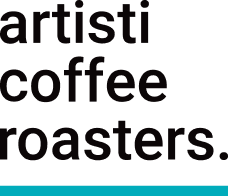In this blog post we are going to go through some simple tips to make your coffee taste better and alleviate the issue of a fast running espresso extraction. Whether you've just unboxed a new machine or have been making coffee at home for a while and just can't seem to nail it, this post is for you.
Skip straight to our video here.
Step 1: Use Fresh Coffee
Firstly check the age of your coffee beans. One reason your espresso shot might be running fast and looking watery is because your coffee is too old. Fresh coffee is essential for a good extraction. Look for coffee with a roast date on it and try to use it within 7 to 28 days from that date. Avoid expiration dates and focus on freshly roasted coffee. If you're looking for a good source, consider ordering some Artisti coffee online to get fresh coffee delivered to your door.
Step 2: Adjust Your Grind Size
The grind size is crucial for a proper extraction. On a home machine, aim for an extraction time of 25 to 30 seconds. This number will change based on a few parameters, but let's keep it simple for now.
-
Check Your Grind Setting: Every grinder is different. For this example, we used a Breville Dual Boiler espresso machine with a Breville grinder. The initial grind setting was at 20, which was too coarse. We adjusted it to grind size 10 and then further to grind size 5.
-
Clear Out Grind Retention: After changing the grind setting it is important to clear out a shot first. There will be coffee left in the chute of the grinder from the previous grind setting, which can affect your shot.
-
Aim for a Flat Top: Use a tool like the razor to level off the coffee in your basket. This helps maintain consistency from shot to shot.
Step 3: Proper Tamping Technique
Tamping your coffee correctly is key to avoiding channeling and ensuring even extraction.
-
Flat and Consistent Surface: After leveling off the coffee, tamp it down with a bit of pressure. Use your body weight and a slight twist at the end to polish it off.
-
Avoid Disturbing the Puck: Be careful not to knock the portafilter after tamping. This can create channels in the coffee and lead to an uneven extraction.
Step 4: Monitor Your Extraction Time
Now, let's talk about the actual extraction process.
-
Pre-Infusion: Some machines, like the Breville Dual Boiler, have a pre-infusion setting that slows down the start of the extraction. Be mindful of this, as it affects your total extraction time.
-
Watch for Blonding: As the coffee starts to extract, look for the point where the stream starts to blonde (turn lighter in color). This is usually when you want to stop the extraction. When you see blonding that is the start of bitter flavors coming through.
Step 5: Fine-Tune Your Dose and Grind
If your shot is still running fast, try these additional adjustments:
-
Increase the Dose: Adding more coffee can help slow down the extraction and produce a richer shot.
-
Fine-Tune the Grind: If increasing the dose isn't enough, continue to adjust the grind size finer, but be cautious. Going too fine can create other challenges.
Final Tips
-
Consistency is Key: Keep your processes as consistent as possible. Use the same amount of coffee, apply the same pressure when tamping, and monitor your extraction times closely.
-
Practice Makes Perfect: Don't be discouraged if it takes a few tries to get it right. Espresso making is an art and takes practice.
By following these simple steps, you can improve your espresso shots at home quickly and easily on any coffee setup. For more detailed guides and advanced techniques, check out our other videos and subscribe to our channel. If you found these tips helpful, let us know in the comments and share your coffee journey with us.
Cheers, and happy brewing!










